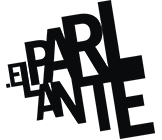Mario Kaplún proposes Educomunicación as a way of using communicative resources so that, “the recipients become aware of their reality, to provoke reflection, to generate a discussion” [Una pedagogía de la comunicación, Madrid, Ed. De la torre, 1998, p. 17]
Cinema is one of those many resources. A technological resource that is both an artistic expression and a place of emotional encounter that encourages reflection. Neither before nor now, has it been possible to think about education without the possibility of emotion. Emotion is precisely the force that allows us to create and be interested in something or someone.
And if most people – of all ages – like cinema, why not use it as a real space for learning, why not incorporate it more decisively into formal class classrooms? What it would be about would be to favor pleasure for learning, to the extent that we learn by discovering worlds and realities pleasantly.
It is not a new idea and yet, from elParlante.es we see that there is much to do yet. Beyond the spaces of non-formal education, in the schools and institutes with which we have collaborated for several years in Catalonia, there are the projectors, computers, speakers and the real possibilities to make each classroom a space for the enjoyment of the seventh art. That is needed, yes: will and a few degrees. Therefore, we take advantage of this space to propose a list that deals with the topics that interest us: interculturality, multiple identities… Migrations.
Surcos (1951).
The Burning Skin (1967).
Toni (1934).
Españolas en Paris (1970).
His eyes closed (1997).
The Letters of Alou, (1990).
El paso suspendido de la cigüeña (1991).
Saïd Saïd, (1998).
Things I Left in Havana (1999).
Flowers from Another World (1999).
East is East (1999)
Vida de moro, (2000).
Welcome, (2000).
Foreigners (2003).
Princesses (2005).
Un franco, 14 pesetas, (2006).
New World (2006)
Couscous (2007).
The Memory Train, (2006).
14 kilometers (2007).
The Class (2008).
Frozen River (2008).
También la lluvia (2010).
El Havre (2011).
The Embrace of the Serpiente (2015).
In addition to the debates about these more independent films that deal directly with issues related to cultural diversity and migration, it is clear that a critical analysis of any audiovisual narrative coming from the big film or television industries can trigger deep reflections on who we are and from where they are told explaining our diversity.
“It’s only been a decade or so since I’ve begun to realize that students learned more about race, sex, and class in movies than in the theoretical literature I urged them to read.” [Bell Hooks, African-American activist.]
